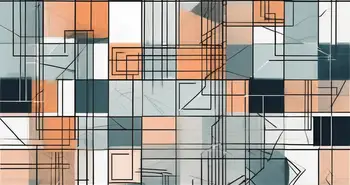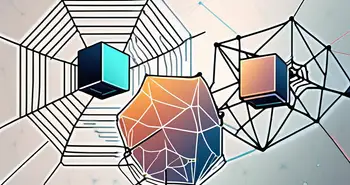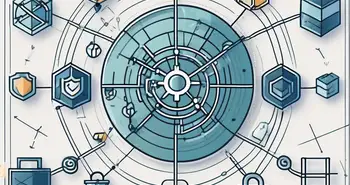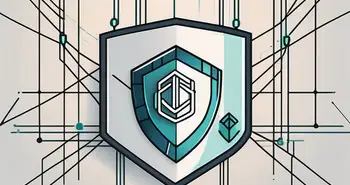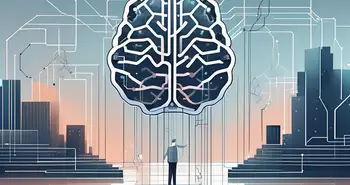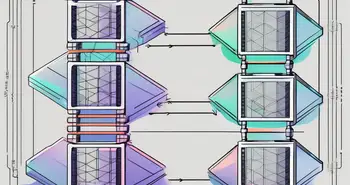Web3 vs Blockchain: Exploring the Differences and Synergies
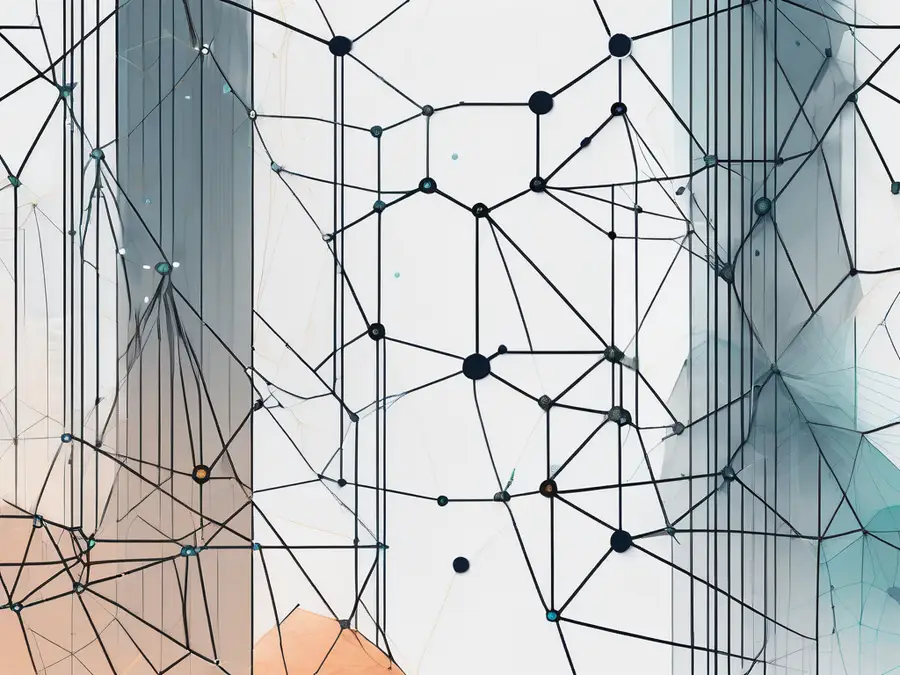
As an expert in the field of emerging technologies, I am excited to delve into the topic of Web3 versus blockchain and explore the intriguing differences and synergies between these two revolutionary concepts. In this article, we will discuss the fundamental basics of Web3 and blockchain, analyze their core differences, uncover their synergistic potential, and explore their roles in shaping the future of technology.
Understanding the Basics
What is Web3?
Web3, also known as the decentralized web, represents the next generation of the internet. It is a paradigm shift that aims to democratize the online experience by placing control back into the hands of users. Unlike the traditional web, which relies on centralized authorities for data storage and management, Web3 is built on blockchain technology and decentralized protocols. This empowers individuals and organizations to have full ownership and control over their data and digital identities.
Defining Blockchain
Blockchain, on the other hand, is the underlying technology that forms the foundation of Web3. It is a digital ledger that securely records and verifies transactions across multiple computers, creating a transparent and immutable record of information. Blockchain is often associated with cryptocurrencies like Bitcoin and Ethereum, but its potential extends far beyond the realm of financial transactions. It enables decentralized applications (dApps) and smart contracts, paving the way for trustless and tamper-proof systems.
One of the key advantages of Web3 is its ability to foster trust and transparency in online interactions. With traditional web platforms, users often have to place their trust in centralized authorities to safeguard their data and ensure fair transactions. However, Web3 eliminates the need for intermediaries by leveraging blockchain's decentralized nature. This means that users can directly interact with each other, confident that the transactions and data exchanges are secure and verifiable.
Furthermore, Web3 opens up new possibilities for innovation and collaboration. By removing the barriers imposed by centralized authorities, individuals and organizations can freely develop and deploy decentralized applications (dApps) on the Web3 infrastructure. These dApps can range from social media platforms that prioritize privacy and data ownership to decentralized marketplaces that enable peer-to-peer transactions without the need for middlemen.
The Core Differences Between Web3 and Blockchain
Technological Differences
While Web3 and blockchain are closely intertwined, they differ in their technological aspects. Web3 encompasses a wide range of technologies, including blockchain, decentralized storage systems, peer-to-peer networks, and cryptographic protocols. On the other hand, blockchain is a specific technology that serves as a foundational layer for the decentralized web. Web3 is more comprehensive, encompassing the entire ecosystem of decentralized technologies.
Let's delve deeper into the technological differences between Web3 and blockchain. Web3, as mentioned earlier, is not limited to blockchain alone. It incorporates various other technologies that work together to create a decentralized and user-centric internet. These technologies include decentralized storage systems, which allow users to store and retrieve data without relying on a central authority. Peer-to-peer networks, on the other hand, enable direct communication and data transfer between users, eliminating the need for intermediaries.
Additionally, cryptographic protocols play a crucial role in Web3 by ensuring the security and privacy of user interactions. These protocols enable encrypted communication, authentication, and digital signatures, safeguarding sensitive information and preventing unauthorized access. In contrast, blockchain, as a specific technology, focuses primarily on providing a secure and transparent ledger for decentralized transactions. It achieves this by utilizing cryptographic techniques to create a tamper-proof and immutable record of all transactions.
Functional Differences
Functionally, Web3 focuses on user empowerment, privacy, and data ownership. It enables individuals to interact with applications and services without relying on intermediaries or third-party entities. Web3 aims to shift the balance of power in favor of users, giving them control over their online experiences and the ability to monetize their data.
When it comes to data ownership, Web3 ensures that users have full control over their personal information. It allows individuals to store their data in decentralized storage systems, where they can decide who has access to it and under what conditions. This empowers users to protect their privacy and choose how their data is utilized, reducing the risk of data breaches and unauthorized use.
Blockchain, on the other hand, provides the infrastructure for decentralized transactions, governance mechanisms, and secure storage, ensuring transparency and immutability. It enables the execution of smart contracts, which are self-executing agreements with predefined rules and conditions. These smart contracts eliminate the need for intermediaries, reducing costs and increasing efficiency in various industries.
In conclusion, while Web3 and blockchain are closely related, they have distinct technological and functional differences. Web3 encompasses a broader range of decentralized technologies, including blockchain, decentralized storage systems, peer-to-peer networks, and cryptographic protocols. It focuses on user empowerment, privacy, and data ownership, giving individuals control over their online experiences. On the other hand, blockchain provides the foundational layer for decentralized transactions, governance mechanisms, and secure storage, ensuring transparency and immutability.
The Synergies of Web3 and Blockchain
Shared Objectives and Principles
Web3 and blockchain share common objectives and principles that make them highly complementary. Both aim to challenge the status quo of centralized control and promote decentralization, transparency, and trust. They empower individuals and foster a more equitable and inclusive digital environment. By combining the principles of Web3 with the technology of blockchain, we can unlock the full potential of decentralized applications, create new economic models, and redefine traditional industries.
How Web3 and Blockchain Complement Each Other
Web3 and blockchain are like puzzle pieces that fit perfectly together. Blockchain provides the necessary infrastructure to secure and validate transactions on the decentralized web. It ensures the integrity and trustworthiness of the data stored in Web3 applications. At the same time, Web3 enriches blockchain by expanding its scope beyond transactions and enabling a broader range of decentralized services and interactions. Together, they form a powerful combination that drives innovation and fosters a more transparent and inclusive digital landscape.
The Role of Web3 in the Future of Blockchain
Enhancing Blockchain Capabilities
Web3 brings new capabilities and enhancements to the blockchain ecosystem. With Web3, blockchain can expand beyond its current limitations and deliver more robust functionality. Web3 enables the integration of real-world data into smart contracts, making them more versatile and adaptable to a wide range of use cases. It also allows for improved scalability and interoperability, addressing some of the scalability challenges faced by blockchain networks. Overall, Web3 amplifies the potential of blockchain, making it more accessible and user-friendly.
Potential Challenges and Solutions
While the future of Web3 and blockchain appears promising, it is not without challenges. One notable challenge is the user experience. The current Web3 user experience can be cumbersome and complex, hindering mainstream adoption. However, efforts are underway to improve the user interface and make Web3 more intuitive and user-friendly. Additionally, scalability and energy efficiency are ongoing concerns for blockchain technologies. Scalability solutions like sharding and layer 2 protocols are being developed to address these challenges, making blockchain more scalable and sustainable.
The Role of Blockchain in the Future of Web3
Strengthening Web3 Infrastructure
Blockchain plays a crucial role in strengthening the infrastructure of Web3. It provides a secure and decentralized framework for storing and verifying data, ensuring the integrity and immutability of Web3 applications. Blockchain enables trustless interactions and facilitates secure peer-to-peer transactions within the Web3 ecosystem. Its decentralized nature enhances the security and privacy of users, fostering a more resilient and censorship-resistant web.
Potential Challenges and Solutions
As with any emerging technology, blockchain faces its own set of challenges within the Web3 landscape. One significant challenge is the scalability of blockchain networks, particularly in handling a large volume of transactions. However, ongoing efforts, such as the development of second-layer solutions and the exploration of alternative consensus mechanisms, are aimed at addressing these scalability issues. Another challenge lies in achieving interoperability between different blockchains, allowing seamless communication and the exchange of assets and data. Fortunately, interoperability standards and protocols, such as Polkadot and Cosmos, are emerging to bridge this gap.
FAQ – Revisiting the Main Points
What is Web3?
Web3 is the decentralized web, built on blockchain technology and decentralized protocols. It aims to give individuals control over their data and digital identities, challenging the dominance of centralized authorities.
What is blockchain?
Blockchain is a digital ledger that securely records transactions across multiple computers. It ensures transparency and immutability, forming the foundational layer for the decentralized web.
How do Web3 and blockchain differ?
Web3 encompasses a broader range of decentralized technologies, while blockchain is a specific technology that powers the decentralized web. Web3 focuses on user empowerment, privacy, and data ownership, while blockchain provides the infrastructure for decentralized transactions and secure storage.
How do Web3 and blockchain synergize?
Web3 and blockchain share common objectives and principles, making them highly complementary. Web3 enhances blockchain capabilities and expands its scope beyond transactions. Together, they foster innovation, transparency, and inclusivity in the digital landscape.
What are the potential challenges for Web3 and blockchain?
Web3 faces challenges in terms of user experience, scalability, and energy efficiency. Blockchain confronts challenges in scalability and achieving interoperability between different blockchains. However, ongoing efforts and innovative solutions are addressing these challenges to pave the way for a more user-friendly and scalable Web3 ecosystem.
In conclusion, the differences and synergies between Web3 and blockchain are at the forefront of technological innovation. By understanding their fundamental principles and exploring their potential, we can shape a future where individuals have ownership and control over their digital lives. Together, Web3 and blockchain hold the key to unlocking a decentralized and inclusive digital landscape that empowers us all. So, embrace the opportunities of Web3 and blockchain, and join the revolution that is reshaping the way we interact with the world.
As we embrace the transformative potential of Web3 and blockchain, it's time to take control of your digital and financial future. Morpher is at the forefront of this revolution, offering a trading platform that harnesses the power of blockchain to provide zero fees, infinite liquidity, and a unique trading experience across a multitude of markets. Whether you're interested in stocks, cryptocurrencies, or even niche markets like NFTs, Morpher empowers you with fractional investing, short selling, and up to 10x leverage. With the Morpher Wallet, your safety and control are paramount. Ready to be part of the future of trading? Sign Up and Get Your Free Sign Up Bonus today, and join the community that's shaping the inclusive digital landscape of tomorrow.

Disclaimer: All investments involve risk, and the past performance of a security, industry, sector, market, financial product, trading strategy, or individual’s trading does not guarantee future results or returns. Investors are fully responsible for any investment decisions they make. Such decisions should be based solely on an evaluation of their financial circumstances, investment objectives, risk tolerance, and liquidity needs. This post does not constitute investment advice.

Painless trading for everyone
Hundreds of markets all in one place - Apple, Bitcoin, Gold, Watches, NFTs, Sneakers and so much more.

Painless trading for everyone
Hundreds of markets all in one place - Apple, Bitcoin, Gold, Watches, NFTs, Sneakers and so much more.


